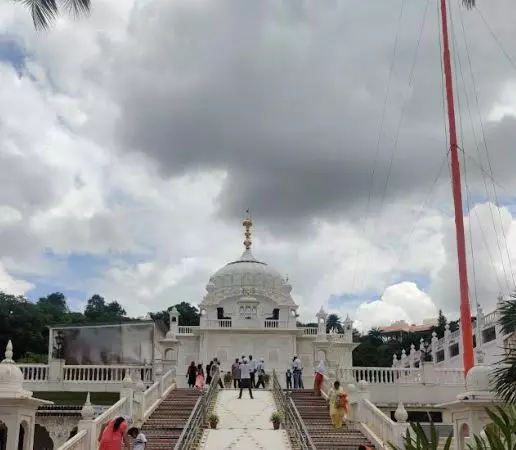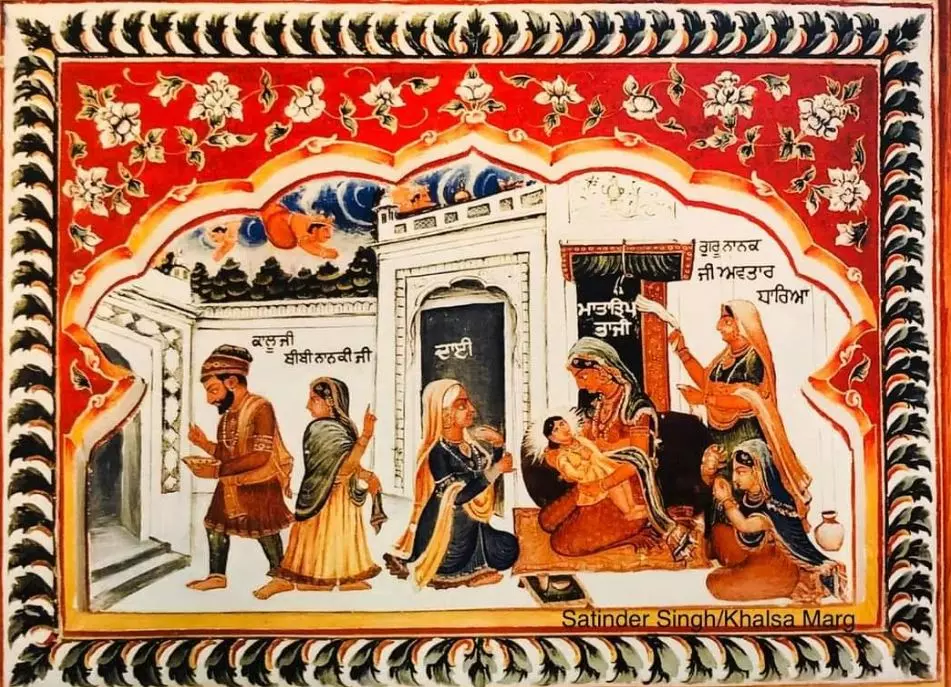Guru Nanak Jayanthi celebrations begin
Hyderabad:As devotees gather for early morning hymn recitations, followed by grand processions and community meals at gurdwaras, the city fills with the reverence and festivity of Guru Nanak jayanti.
Sikhs in Hyderabad and Secunderabad have commenced their week-long celebration for Guru Nanak's Prakash Parb or Revelation Day on November 15. This marks the 555th anniversary of Guru Nanak's revelation. Sri Guru Singh Sabha in Secunderabad organised a Nagar Keertan on Monday and Hyderabad Sabha will hold another on November 13. A large congregation is planned for November 15 at the Exhibition Grounds in Nampally.
The beauty of the morning processions or Nagar Keertans lies in their inclusiveness, as people of all faiths join in celebrating and honouring Guru Nanak Dev’s teachings and legacy with vibrant festivity. This procession usually takes place a day or two before Prakash Parb.
Led by the Panj Pyare or the five beloved, the procession includes the singing of hymns, music, martial arts displays (Gatka) and decorated floats. The Guru Granth Sahib is carried on a beautifully adorned float, with devotees paying respects along the route.
Hyderabad’s connection to Sikh heritage is rich and longstanding. Guru Nanak Dev Ji himself visited the Deccan region in 1512–13 during his second Udasi (journey). His route passed through significant locations, from Jagannath Puri and Visakhapatnam to Rajahmundry, Vijayawada, Golconda, Bidar and eventually Rameshwaram before he journeyed to Ceylon (Sri Lanka).
During this period, the Deccan was ruled by Sri Krishnadevaraya of Vijayanagar, who had defeated the Sultans of Bijapur and Golconda. Bidar, known for its educational and social reform initiatives, was a hub of learning and housed the renowned Mahmud Gawan madrasa. This institution, led by scholars and scientists from around the world, accommodated over 500 students, providing free boarding, lodging and a library with 3,000 manuscripts.
At Bidar, Guru Nanak Ji performed an act that left a lasting impact on the community. When locals faced a water scarcity issue, he is believed to have created a freshwater spring by touching the base of a hillock with his feet, a spring that has flowed continuously for the past five centuries.
"This spring symbolises Guru Nanak Ji's enduring compassion for all,” explained Sardar Sajjan Singh, a city-based heritage expert and member of the Sikh Heritage Preservation and Conservation Subcommittee, SGPC Amritsar.
The Sikh presence in Hyderabad expanded in 1832 when Nizam Nasir-ud-Daula, through Prime Minister Raja Chandu Lal, requested Maharaja Ranjit Singh of Punjab to send troops to the Deccan to assist with law enforcement and revenue collection. The Maharaja dispatched a renowned Sikh contingent, known as the ‘Sikh Force,’ which was stationed at Kishan Bagh, an area still referred to as Sikh Chhawni (Sikh Cantonment) today.
The Nizam provided land for the Sikh Force and gurdwaras were soon established across the city. Though the Sikh Force was formally disbanded in 1956 following Hyderabad's merger with India, Sikh families have continued to settle in Hyderabad over the years. Today, Hyderabad is home to 34 Gurdwaras, each serving as a pillar of faith, unity and community for the city’s Sikh residents.



